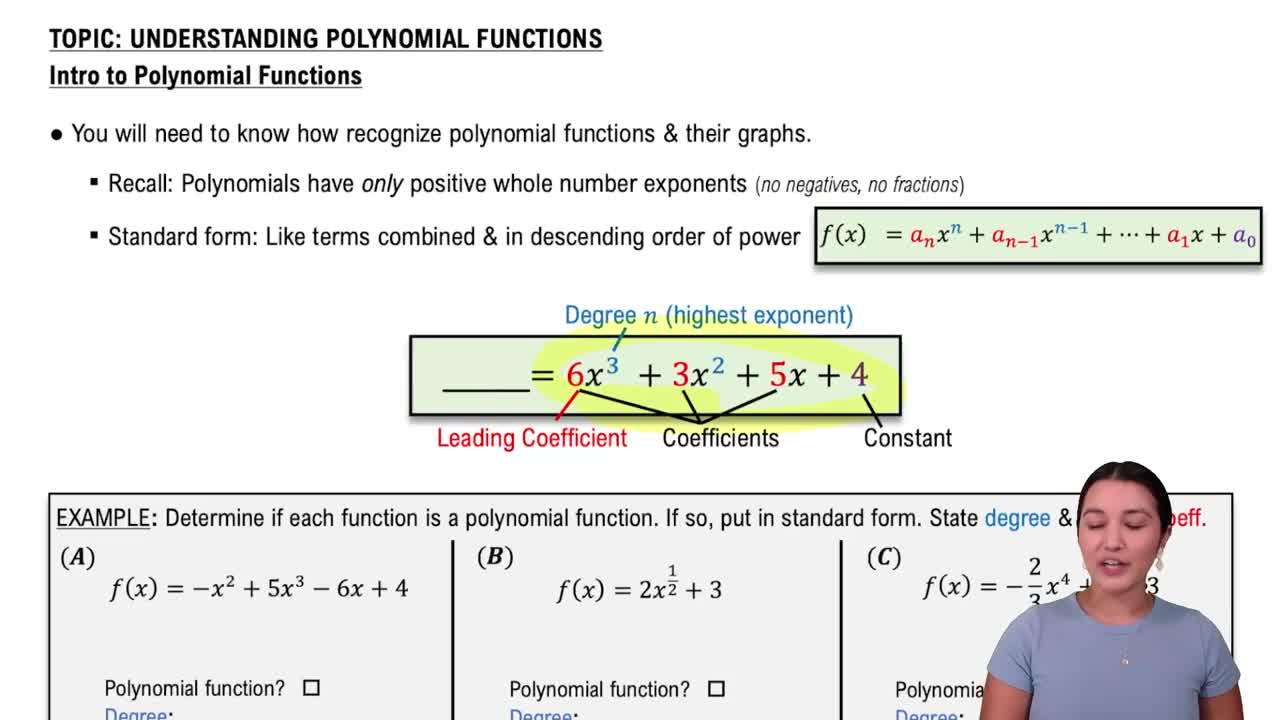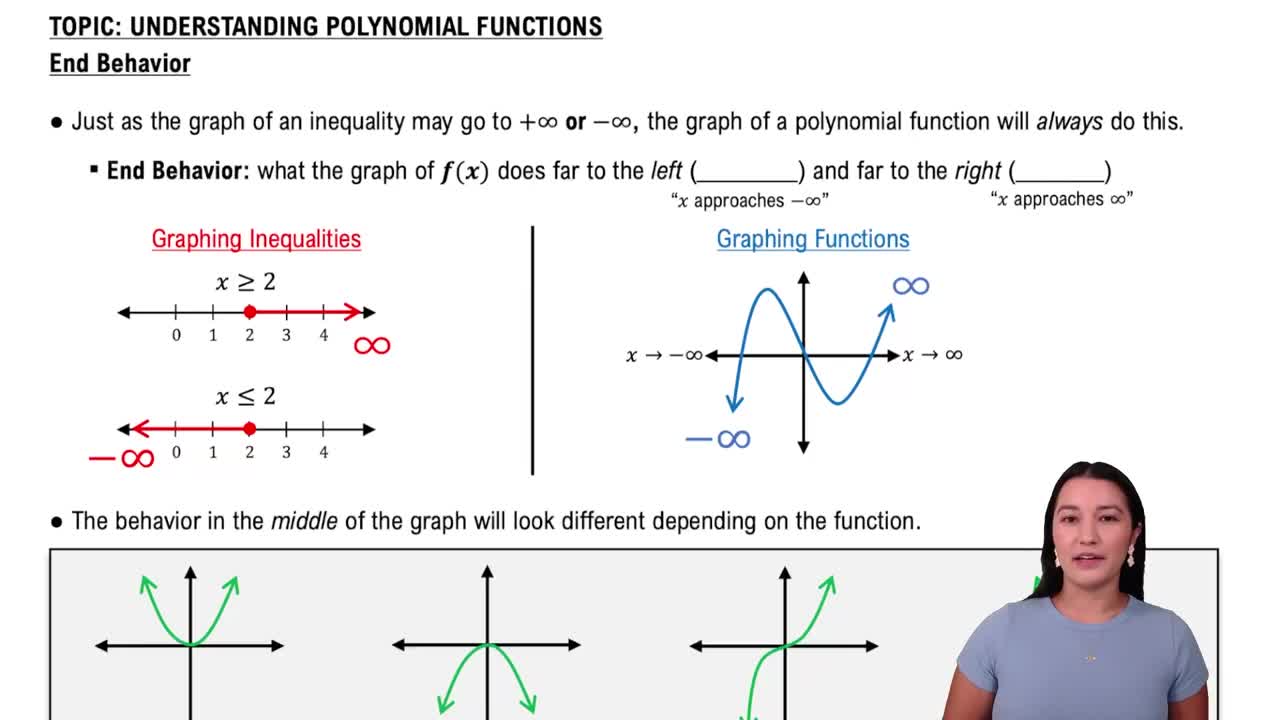Table of contents
- 0. Review of Algebra4h 16m
- 1. Equations & Inequalities3h 18m
- 2. Graphs of Equations43m
- 3. Functions2h 17m
- 4. Polynomial Functions1h 44m
- 5. Rational Functions1h 23m
- 6. Exponential & Logarithmic Functions2h 28m
- 7. Systems of Equations & Matrices4h 6m
- 8. Conic Sections2h 23m
- 9. Sequences, Series, & Induction1h 19m
- 10. Combinatorics & Probability1h 45m
4. Polynomial Functions
Understanding Polynomial Functions
Problem 26c
Textbook Question
In Exercises 25–26, graph each polynomial function. f(x) = -x^3(x + 4)^2(x-1)
 Verified step by step guidance
Verified step by step guidance1
Identify the degree of the polynomial by adding the exponents of each factor: \(-x^3(x + 4)^2(x-1)\) has a degree of 3 + 2 + 1 = 6.
Determine the end behavior of the polynomial. Since the leading term is \(-x^6\), the graph will fall to the left and fall to the right.
Find the x-intercepts by setting each factor equal to zero: \(-x^3 = 0\), \((x + 4)^2 = 0\), and \((x - 1) = 0\). This gives x-intercepts at x = 0, x = -4, and x = 1.
Analyze the multiplicity of each root: x = 0 has multiplicity 3 (cubic), x = -4 has multiplicity 2 (quadratic), and x = 1 has multiplicity 1 (linear). This affects how the graph behaves at each intercept.
Sketch the graph using the intercepts and end behavior. At x = 0, the graph will touch and turn around due to the odd multiplicity. At x = -4, the graph will bounce off the x-axis due to the even multiplicity. At x = 1, the graph will cross the x-axis.
Recommended similar problem, with video answer:
 Verified Solution
Verified SolutionThis video solution was recommended by our tutors as helpful for the problem above
Video duration:
5mPlay a video:
Was this helpful?
Key Concepts
Here are the essential concepts you must grasp in order to answer the question correctly.
Polynomial Functions
A polynomial function is a mathematical expression involving a sum of powers in one or more variables multiplied by coefficients. The general form is f(x) = a_n*x^n + a_(n-1)*x^(n-1) + ... + a_1*x + a_0, where 'n' is a non-negative integer and 'a_n' are constants. Understanding the structure of polynomial functions is essential for analyzing their behavior, including their roots and end behavior.
Recommended video:

Introduction to Polynomial Functions
Factoring and Roots
Factoring a polynomial involves expressing it as a product of its linear factors, which directly relates to finding its roots or x-intercepts. For the function f(x) = -x^3(x + 4)^2(x - 1), the roots are x = 0, x = -4, and x = 1. The multiplicity of each root affects the graph's behavior at those points, such as whether the graph crosses or touches the x-axis.
Recommended video:

Imaginary Roots with the Square Root Property
Graphing Techniques
Graphing polynomial functions requires understanding key features such as intercepts, end behavior, and turning points. The degree of the polynomial indicates the maximum number of turning points, while the leading coefficient determines the direction of the graph's ends. By plotting the roots and analyzing the function's behavior around them, one can create an accurate representation of the polynomial's graph.
Recommended video:
Guided course

Graphs and Coordinates - Example

 6:04m
6:04mWatch next
Master Introduction to Polynomial Functions with a bite sized video explanation from Callie
Start learningRelated Videos
Related Practice


















